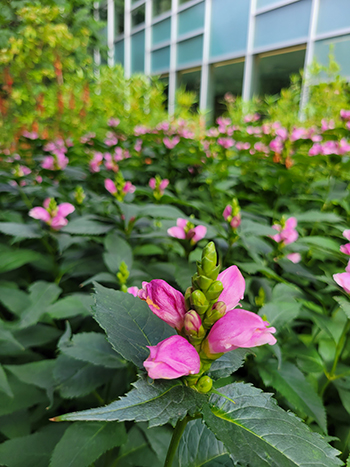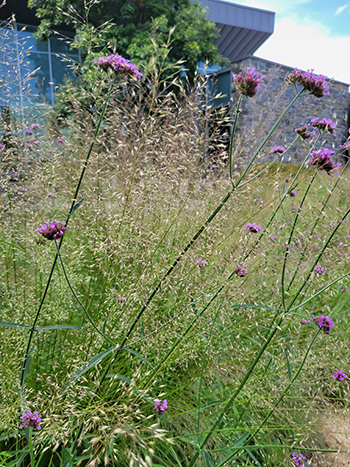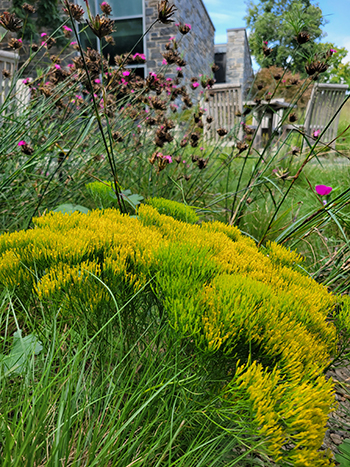
Plants of the Week: August 21
Guest Author: Wylie Lapp, Public Horticulture Intern

Chelone lyonii ‘Armtipp02’ (Tiny Tortuga turtlehead)
Summer is full swing at the Scott Arboretum, bringing with it all the heat and humidity we can bear. Coneflowers and warm season grasses are holding their own in the sunnier parts of the garden. The shady areas however, are seemingly a little lackluster, that is until you come across a patch of Chelone lyonii in the Glade Garden.When all the other woodland perennials seem to be going into their summer slumber, turtleheads are just starting to burst into the scene. While the dark green foliage is present most of the season, the flower buds don’t begin to open until early to mid August. The common name becomes fairly apparent when you look at the small hooded flowers. You might have to try, but you can almost imagine a tiny turtle’s head, in shades of magenta no less! A lovely woodland wildflower that lights up the understory in the lulls of summer, I simply cannot recommend Chelone lyonii enough. photo credit: W. Lapp

Sporobolus heterolepis (prairie dropseed)
I remember driving past abandoned farmlands and the meadows that took over those areas during long, summer drives. One of the most memorable parts was the spicy sweet smell that wafted up, seemingly saying “summer is here.” Sporobolus heterolepis in the peak of summer seems to bring back those memories. I am reminded of that coriander-like smell whenever I pass by the infiltration beds near the Science Center, where S. heterolepis is planted en masse. By mid-summer, the Sporobolus is in bloom and the beds erupt into a cloud of airy panicles that contrast beautifully with brightly colored blooms of Dianthus, Callirhoe, and Bigelowii scattered throughout. If you’re lucky enough you can pass by on a breezy summer’s day and catch that spicy fragrance of this warm season grass. photo credit: W. Lapp

Bigelowia nuttallii (Nutall’s rayless goldenrod)
For those familiar with Bigelowia nuttallii, it can be a pretty decisive plant. Some are fans while others feel that it looks somewhat alien with its little spikes of yellow flowers and oddly branching foliage all tucked into a small mound no higher than a foot. This however, is exactly why I love it! The strong colors of Nuttall’s rayless-goldenrod play well with other brightly colored blooms or grasses as it does here in the Sporobolus beds, near the Science Center. Bigelowia nuttallii can be a bit finicky as it does prefer loose well draining soil and will come and go, often seeding randomly throughout the garden. While it is vaguely reminiscent of other members of the Asteraceae family, Bigelowia nuttallii adds a funky charm that I think should be appreciated in the garden. photo credit: W. Lapp





Robert H Roggeveen
Posted at 10:07h, 16 SeptemberThree quite wonderful plants. The selection is a testament to the Arboretum’s ability to create so mny different growing conditions.
Chelone lyonii needs to make a re-appearance in my garden. I think I have just the spot. And, perhaps, I can pair it with Chelone glabra – native to Connecticut.
I do not think that Nuttall’s Rayless Goldenrod will thrive here, though… I do see I can get it from a source in New Jersey, and it is listed hardy to Z4b.
As always, a helpful and illuminating feature.